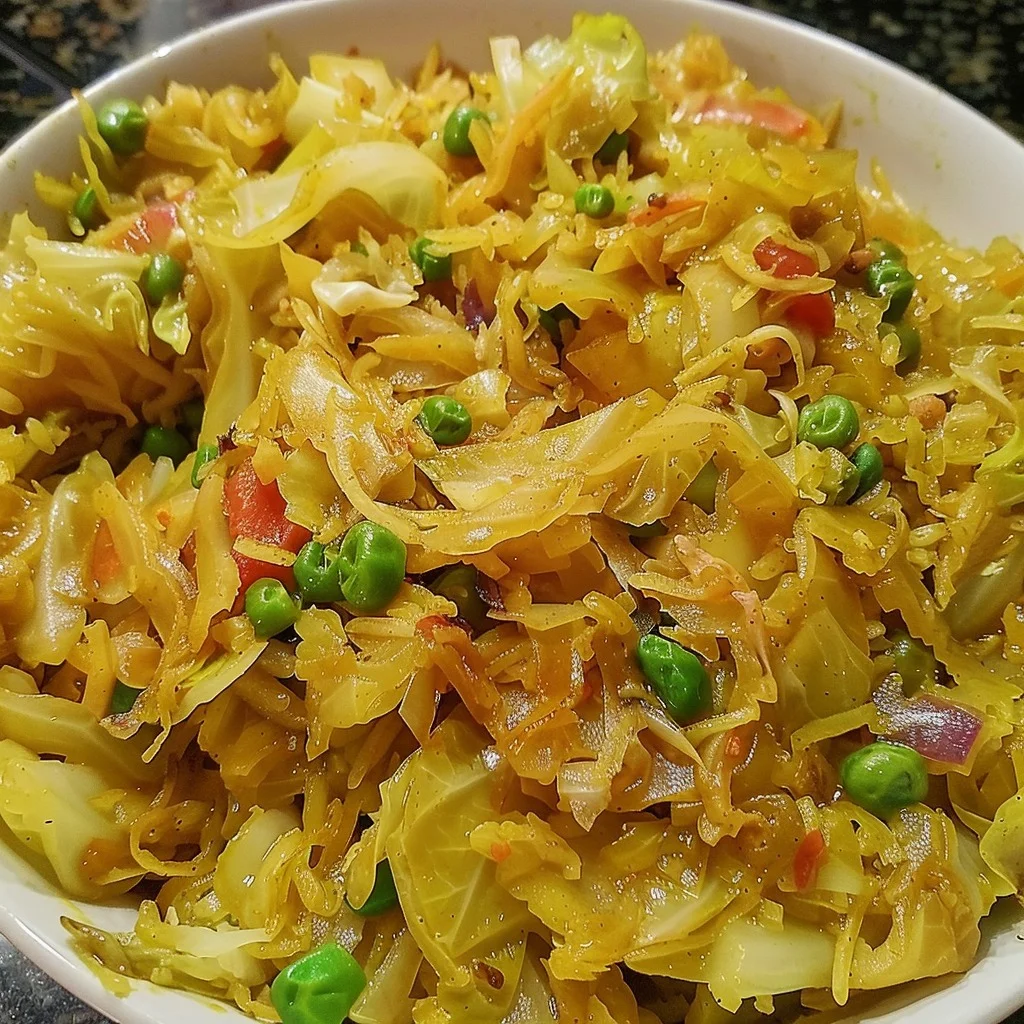ADVERTISEMENT
Large skillet or frying pan
Knife and cutting board
Measuring spoons
Wooden spoon or spatula
Preparation Instructions
Preparing the Vegetables:
Begin by slicing the cabbage into thin strips. Ensure the slices are even for uniform cooking. Chop the onion into small, consistent pieces. These vegetables form the base of the dish and should be prepared before starting to cook.
Heating the Oil:
Heat 2 tablespoons of oil in a large skillet over medium heat. The oil should be hot enough to shimmer but not smoke. This step is crucial as it helps in evenly cooking the vegetables and prevents sticking.
Sautéing the Onion:
Add the chopped onion to the skillet. Sauté the onion until it becomes translucent and soft, about 3-4 minutes. This process releases the natural sugars in the onion, enhancing the overall flavor of the dish.
Adding the Cabbage:
Once the onion is softened, add the sliced cabbage to the skillet. Stir well to combine with the onions. The cabbage should start to soften as it cooks, but still retain a slight crunch.
Incorporating the Curry Powder:
Sprinkle 2 tablespoons of curry powder over the cabbage and onion mixture. Stir thoroughly to ensure the spices coat all the vegetables evenly. This step allows the curry powder to toast slightly, deepening its flavor.
Seasoning with Salt:
Add salt to taste. The amount of salt can be adjusted based on personal preference and dietary requirements. Stir well to incorporate the salt evenly.
Cooking the Cabbage:
Continue to sauté the cabbage mixture, stirring occasionally. The cabbage should begin to wilt and become tender, but not mushy. This process usually takes about 5-7 minutes.
Adding the Frozen Vegetables:
Stir in the frozen carrot and pea mix. The moisture from the frozen vegetables helps to keep the dish moist and prevents it from drying out. Mix well to combine all the ingredients.
Cooking the Vegetables:
Cook the mixture for another 5-7 minutes, or until the frozen vegetables are heated through and the cabbage reaches the desired level of tenderness. The vegetables should be cooked but still retain some of their texture.
Adjusting the Flavor:
Taste the dish and adjust the seasoning as needed. You can add more salt or curry powder at this stage. For a spicier version, consider adding a pinch of cayenne pepper or some freshly chopped chili.
Serving Suggestions:
Serve the curried cabbage hot, either as a main dish or a side. It pairs wonderfully with steamed rice, naan bread, or boiled potatoes. The dish can also be enjoyed on its own for a lighter meal.
Garnishing Options:
For added flavor and presentation, consider garnishing the dish with fresh herbs such as cilantro or parsley. A squeeze of lemon juice can also add a fresh, zesty kick.
Storing Leftovers:
Leftovers can be stored in an airtight container in the refrigerator for up to three days. Reheat in a skillet or microwave before serving. The flavors often deepen and develop further after a day, making leftovers even more delicious.
Nutritional Information (Approximate per Serving)
Calories: 150
Protein: 3g
Fat: 8g
Carbohydrates: 18g
Fiber: 5g
Sugar: 6g
Variations and Additional Ingredients
Vegetable Variations:
Feel free to add other vegetables such as bell peppers, zucchini, or green beans. Fresh vegetables can be added along with the cabbage, while frozen vegetables should be added later in the cooking process.
Protein Additions:
For a more filling meal, add a protein source like tofu, chickpeas, or lentils. These can be cooked separately and stirred in towards the end.
Spice Adjustments:
If you prefer a milder dish, reduce the amount of curry powder or use a mild curry blend. Conversely, for more heat, add extra curry powder, fresh chilies, or a pinch of cayenne pepper.
Flavor Enhancements:
A splash of coconut milk can be added towards the end of cooking for a creamy texture and a subtle coconut flavor. Alternatively, a tablespoon of tomato paste can add depth and a slight tanginess.
Conclusion
Curried Cabbage is a versatile and delicious dish that is easy to prepare and can be adapted to suit various tastes and dietary preferences. Its simplicity makes it an excellent choice for a quick meal, while the rich flavors of curry provide a satisfying and comforting experience. Whether you’re looking for a healthy side dish or a light main course, this recipe offers a perfect balance of flavor, nutrition, and convenience. Enjoy experimenting with different vegetables and spices to make this dish your own!
